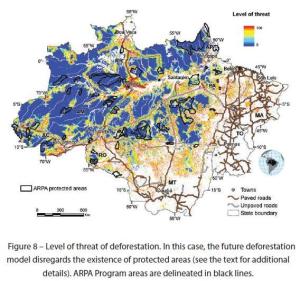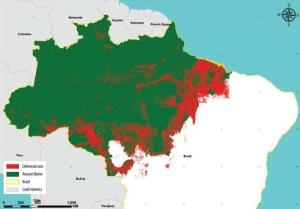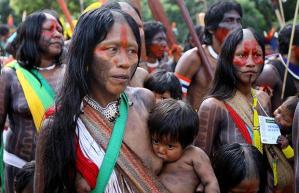Mar 21
20104
Greenpeace, Nature Conservancy, World Resources Institute, World Wildlife Fund (WWF)
Amazon Fund Amazon Region Protected Areas (Arpa) carbon sinks Clean Development Mechanism (CDM) Environmental Defense Fund Forest Peoples Programme Global Forest Alliance Gordon & Betty Moore Foundation Indigenous Rights Survival International The Nature Conservancy Tumucumaque project UNFCCC World Bank World Resources Institute World Wildlife Fund WWF
WWF Mines The Green Gold Rush To The Amazon: Making $60 billion From Fear
WWF Mines The Green Gold Rush To The Amazon: Making $60 billion From Fear
<!– CUSTOM IMAGE URL ?
–>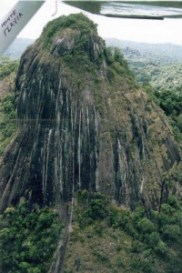 Appearing in the Booker column (and on Watts up with that?) is an account of how the “conservation” group WWF hopes to turn Amazonian trees into billions of dollars, all in the name of saving the planet. The background briefing on which Booker relied is posted below, detailing how the rainforests are to become a monstrous cash-making machine, writes Richard North:
Appearing in the Booker column (and on Watts up with that?) is an account of how the “conservation” group WWF hopes to turn Amazonian trees into billions of dollars, all in the name of saving the planet. The background briefing on which Booker relied is posted below, detailing how the rainforests are to become a monstrous cash-making machine, writes Richard North:
The Amazon – a “green gold-rush”
The WWF and other green campaign groups talking up the destruction of the Amazon rainforests are among those who stand to make billions of dollars from the scare. This “green gold-rush” involves taking control of huge tracts of rainforest supposedly to stop them being chopped down, and selling carbon credits gained from carbon dioxide emissions they claim will be “saved”.
Backed by a $30 million grant from the World Bank, the WWF has already partnered in a pilot scheme to manage 20 million acres in Brazil. If their plans get the go-ahead in Mexico at the end of the year, the forests will be worth over $60 billion in “carbon credits”, paid for by consumers in “rich” countries through their electricity bills and in increased prices for goods and services.
The prospect of a billion-dollar windfall explains the sharp reaction to the “Amazongate” scandal, in which the IPCC falsely claimed that up to 40 percent of the rainforest could be at risk from even a slight drop in rainfall.
Here, the IPCC was caught out again making unsubstantiated claims based on a WWF report. But unlike the “Glaciergate” affair where its claim that Himalayan glaciers would melt by 2035 was conceded to be an “error”, the IPCC stood firm on its Amazon claim, stating that the assertion was “correct”. What makes the difference is that there is no serious money locked into melting glaciers. Amazonian trees, however, are potentially worth billions.
In standing its ground, the IPCC was strongly supported by the WWF, and by Daniel Nepstad, a senior scientist from the US Woods Hole Research Centre. Relying on an assiduously fostered reputation as a leading expert on the effects of climate change in the Amazon rainforests, Nepstad – who works closely with the WWF – posted on the Centre’s website a personal statement endorsing “the correctness of the IPCC’s statement”. Bizarrely, his own research failed in any way to substantiate the claim.
The carbon trading agenda
Behind this very public defence lies a network of financial interests, not least on the board of the Woods Hole Research Centre, which counts several former and current equity fund managers responsible for billions of dollars-worth of private investments. The board is chaired by Lawrence Huntington – formerly of Fiduciary Trust International. Members include Joseph Robinson of MidMark Capital and Joshua Goldberg of Altamont Capital Partners, massively wealthy investment funds.
And at the centre of the advocacy for the development of “financial instruments” which it is hoped will generate billions in income is Nepstad himself (pictured below).
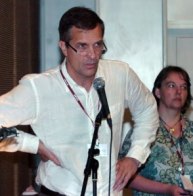
The Woods Hole interest had earlier been declared in March 2006 when Richard Houghton, a senior scientist and deputy director of the centre sent a memorandum to the secretariat of the UN Framework Convention on Climate Change (UNFCC) on developing a scheme called “Reducing emissions from deforestation in developing countries” (REDD). “Carbon credits represent the largest potential flow of revenue in support of sustainable development in tropical forest regions,” he then stated.
REDD had, in fact, been a long time coming. The basis of a system had been set up by the 1997 Kyoto climate treaty, known as the Clean Development Mechanism (CDM), administered by the United Nations Framework Convention on Climate Change (UNFCCC). Through this, third world countries which reduced CO2 emissions could turn their savings into “carbon credits” which could be sold to industries in developed countries.
Crucially, the CDM only applied to energy production and some industrial processes, and did not extend to forests. After intensive lobbying, though – and despite considerable European scepticism – in 2001, the parties to the Kyoto Protocol officially approved the use of plantations for generating carbon credits.
The EU, however, decided not to allow these credits to be swapped in its emissions trading system, drastically reducing their potential value. The concept was further weakened by the considerable difficulty in proving how much carbon biomass projects actually saved over their brief and uncertain lifetimes. Estimates varied ten-fold, which damaged the credibility of the emerging voluntary market in carbon “offsets”, which were being used to test the concept of forest-generated carbon credits.

Their mechanism to bring forests fully into the CDM was REDD, which first appeared as an agenda item in December 2005, at the 11th session of the Conference of Parties to the Climate Change Convention (COP 11) in Montréal. Two years later, at COP 13 in Bali, it had become “the big new idea to save the planet from runaway climate change.”
The scheme was to comprise two parts. First, there is a set-up fund to create “reserves” or “protected areas” (PAs), where deforestation would be prevented (This fund has already been set up and is currently worth $4.5 billion, made up from donations from Norway, France and four other countries). Secondly, the CDM kicks in. Each ton of carbon dioxide “saved” in the protected areas becomes a carbon credit, sold to industrialists in the developed world to allow them to continue emitting CO2. By this means, the funds come rolling in.
Thus, REDD had become a vehicle for building a billion-dollar global fund to take control of hundreds of millions of acres of rainforest throughout the world, a giant cash machine.
Amazon Region Protected Areas Project (ARPA)
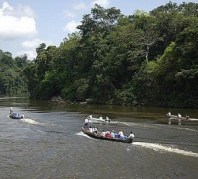
However, at the same time, the country was in an economic crisis and the government was scaling back environmental funding, even refusing foreign donations of $25 million pledged to support environmental measures. This gave WWF the opportunity for its coup, a chance to set up what was to become a pilot scheme for REDD. With the World Bank, Brazilian government agencies and environmental specialists, it set up a task force to develop its plan.
At that time, there was a loose-knit under-funded network of national parks, poorly administered by federal and state governments. Driven by WWF, the idea was to establish a massive extension to the system, not under the direct control of the Brazilian authorities but of the NGOs themselves. This “take over” was to become the Amazon Region Protected Areas Project (ARPA).
To finance its plan, the WWF then obtained $18 million seed funding from the San Francisco-based Gordon and Betty Moore Foundation. This was topped up with $15 million from the German government, paid through the state-owned KfW Entwicklungsbank. Then its Brazilian partner, FUNBIO (The Brazilian Biodiversity Fund) – an NGO which had been started in 1996 with a $20 million grant from the Global Environment Facility – contributed $18 million, donated by the Brazilian government.
Fronting FUNBIO, the WWF then orchestrated a formal application for a grant from its partner, the World Bank. Predictably, in 2002, the Bank donated $30 million from public funds. It also arranged for its small grants division, the GEF to donate $500,000 to a trust fund to help maintain the areas.

Situated in the extreme north of the country, bordering French Guiana (see map, right: area in green), this vast park had no roads leading in or out, almost no accessibility by air, rivers that have yet to be navigated and virtually no human inhabitants. Access is by river or helicopter. And so difficult is the terrain that a WWF expedition to the northern boundary took three weeks. At least four people returned with medical problems: two with infected feet and two with malaria.
The very remoteness of this region underlines a central point. There was virtually no risk of deforestation or commercial exploitation. Although there had been some mining in the area, even the WWF was forced to concede that the damage was “smaller than predicted.”
Then, as the WWF itself admits, the bulk of the deforestation is taking place in south and southeast, with some coastal areas and a band in the centre along the main river, where water transport is possible. As to the Tumucumaque park, the WWF assessed the risk of deforestation as “nil”- in common with most of the other ARPA strict protection areas (see maps below – click to enlarge).
Nevertheless, by the end of 2006, WWF had the bulk of its areas established, which cleared the way for the next stage of its plan. In April 2007, it and the World Bank formalised their already very close association with the launch of a Global Forest Alliance.
By combining forces and “working with partners in government, civil society, and the business sector,” said the WWF, “Alliance partners leverage support and results to reverse the process of forest loss and degradation.” The World Bank, for its part, was to provide a $250 million start-up fund which it called the “avoided deforestation” project.
Apart from the Amazon, a prime target was one million hectares of classified “conservation forest” in West Papua, New Guinea, where tribes were complaining of evictions from their traditional lands. The WWF was already negotiating with the Indonesian government to set up a management scheme.

Woodwell is also a founding trustee of the World Resources Institute, another advocacy group. It is currently chaired by James A Harmon, Chairman of the investment group Harmon & Co and a director of Questar Corporation, an integrated natural gas exploration, distribution and pipeline company. He is also senior advisor to the Rothschild Group. Additionally, the Institute counts as a board member Al Gore, chairman of Generation Investment Management, a company with strong interests in carbon trading.
Funded heavily by the Moore foundation, to the tune of over $7 million, and working in partnership with the WWF on the Tumucumaque project, in May 2008 Woods Hole Research Centre, alongside the Federal University of Minas Gerais in Brazil, came up with the “Holy Grail”, a methodology for calculating the carbon “savings” from managing rainforests.
With this, they estimated that areas protected by the ARPA programme would save 5.1 gigatons of CO2 emissions by 2050. Based on the UNFCCC valuation for a ton of CO2 at $12.50, that equated to over $60 billion-worth of carbon credits. This “finding” was presented that month to the UN Convention on Biological Diversity, meeting in Bonn and the work was also adopted by the World Bank.
The WWF campaign

Crucially, it complained that forest projects were “not yet recognised under the Clean Development Mechanism” The agenda was clear. WWF and its allies wanted a new treaty, to be agreed by the then forthcoming Copenhagen climate summit, to include forests in the CDM.
To that effect, WWF released a detailed policy checklist for delegates, setting out “legal and regulatory requirements to stimulate REDD activities”. Its proposal for carbon credits, tied in with a US “cap and trade” system, could provide revenues of up to $4-$5 billion per year for REDD activities.
Ramping up the publicity, it then argued that: “Aggressive action to reduce (and ultimately halt) emissions from deforestation and forest degradation (REDD) must be part of any serious policy to address the climate crisis…”. Without REDD, WWF averred, “keeping global average surface temperature increase below 2°C will likely be impossible.”
To support the case, it mobilised its allies, pulling together a raft of Brazilian NGOs with Greenpeace, Conservation International, and Friends of the Earth to launch “the National Pact to Acknowledge the Value of the Forest and to End Amazon Deforestation.”
It also set up the WWF Forest Carbon Network Initiative again arguing that carbon finance would play a critical role in reducing global greenhouse gas emissions. As such, it declared, the development of carbon finance mechanisms had “emerged” as a major part of WWF’s conservation finance portfolio.
Simultaneously, it launched an Amazon Fund, inviting sponsorship contributions of $50 to preserve one acre of Amazonian rainforest for 20 years, using the opportunity to argue for placing a price on carbon through a cap-and-trade programme. By this means, it said, “keeping forests intact becomes economically valuable. Climate policy can then help realize this value for countries and communities that choose to protect forests.” Halving global emissions from deforestation could produce $3.7 trillion in net benefits to the global economy, it claimed.
Then, to lock in its preferred option, WWF launched a spirited campaign against biofuels, funding a study which argued that preventing deforestation was better for “biodiversity and climate” than clearing virgin forest and planting energy crops such as oil-palm plantations.
In the run-up to the Copenhagen summit, it was now Nepstad’s turn to increase the pressure. As lead author of an article in the prestigious Science journal, he argued for the REDD mechanism, “payments for tropical forest carbon credits under a U.S. cap-and-trade system” and the need to raise $7 to $18 billion to stop forest clearance. One of his co-authors, Frank Merry, gave his address as the Gordon and Betty Moore Foundation, while another had his as the Environmental Defense Fund in Washington.
Opposition to REDD

Campaigner Chris Lang, founder of “REDD Monitor“, saw the scheme as a new way of “breathing life into the scam of carbon trading”. REDD could involve the biggest ever transfer of control over forests – to international carbon financiers and polluting companies, he said.
By September 2009, Scientific American was retailing the fears of Marcus Colchester of the Forest Peoples Programme. “We see a risk that the prospect of getting a lot of money for biodiversity could lead to indigenous peoples’ concerns falling by the wayside,” he said. Tom Goldtooth of the Indigenous Environmental Network was concerned that increasing the financial value of forests could lead to “the biggest land grab of all time.”
Expectations that things would be any different because the schemes are run by conservation groups do not appear to be fulfilled. An account of a scheme run by WWF partner, The Nature Conservancy, on Brazil’s Atlantic Coast at Guaraqueçaba, details massive “injustices”, the NGO trampling over the rights of local people.
Financed with $18 million by General Motors, Chevron and American Electric Power, this organisation – with the familiar mix of financiers on its board – created three reserves covering a total of 20,235 hectares. The commercial tie-up was seen as exposing REDD simply as a means to help polluting corporations to “offset” their emissions, without leading to any overall drop in CO2 emissions. The NGOs were simply the “front” organisations, the acceptable public face.
Other writers see REDD as “Tribal Peoples Versus Carbon Cowboys”, arguing that the scheme will bring indigenous peoples “massive disruption and little benefit.” Jonathan Mazower, of Survival International, notes that where outsiders place monetary value on land where indigenous people live, they “always almost suffer”. His organisation has produced a report condemning the whole system.
Reinforcing the concern, the International Forum of Indigenous Peoples on Climate Change stated: “REDD will increase the violation of our human rights, our rights to our lands, territories and resources, steal our land, cause forced evictions, prevent access and threaten indigenous agriculture practices, destroy biodiversity and culture diversity and cause social conflicts.”
When it came to the Copenhagen summit, no final agreement was reached on a climate treaty. But, much to the relief of WWF and its allies, elements of REDD – now known as “REDD+” were agreed. And, for the critics of the scheme, it looked as if their worst fears had been realised. In the small print of the proposal, there had been an explicit reference to the need to safeguard indigenous peoples. But, when it came to the actual Copenhagen accord, there was no mention of rights or safeguards at all. Yet this will go forward for final agreement at Mexico at end of the year.
Eco-imperialism
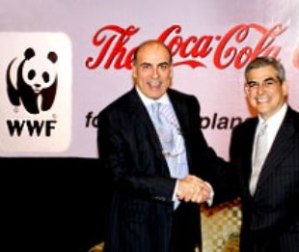
It incurred the ire of The Ecologist and other environmental groups for supporting actions of the Roundtable on Responsible Soy (RTRS), which it co-founded in 2004. This grouping comprises producers, finance, trade & industry representatives, NGOs, certification bodies and universities.
Members range from Monsanto, Syngenta, Cargill, Bunge to Unilever, Shell, BP, Conservation International, The Nature Conservancy, WWF and producers such as Gruppo André Maggi – the world’s largest soybean producer based in Brazil.
Despite its concern for deforestation – in which soya growing is heavily implicated – WWF endorsed an RTRS criterion that could allow “responsible” soy to be grown on land that was deforested as recently as May 2009. And soy can still be labelled “responsible” when harvested from lands deforested after May 2009 if the producer could demonstrate that it was not prime forest or an area of High Conservation Value, or land belonging to local peoples.
On the ground, freelance writer Glenda Freeman, a native of New Zealand/Aotearoa, describes WWF activities as “Green Imperialism“, labelling this giant, corporate organisation a “BINGO” (Big International Non-governmental Organisation). She complains that WWF intervention keeps native populations “idle and dependent” while creating the problem it hoped to solve.
Anonymous authors of a publication entitled, “People Against Foreign NGO Neocolonialism” – a group of dissident environmentalists – state that foreign conservation conglomerates “whitewash effort to please donors so that the big bucks will keep flowing.” They contradict claims that these groups have had any real conservation impact.
Speaking of efforts in Papua New Guinea (PNG), they assert that, “With the help of willing donors such as AUS-AID, UNDP, the MacArthur Foundation, and the Moore Foundation, any possibility of achieving lasting conservation of PNG’s biodiversity is being destroyed in the here and now… The international conservation NGOs in PNG are proving to be a model of how not to do either conservation or development”.
Organisations such as WWF, Conservation International and The Nature Conservancy are accused of having caused “the atrophy of what would have been a natural evolution of a truly indigenous conservation movement.” Corporate, hierarchical models of conservation based upon outside foreign experts – often with little in-country knowledge or concern – threaten the world’s rainforest as surely as logging, agriculture, etc.
And in a commentary that could have been written with the Tumucumaque Mountains National Park in mind, they note that uninhabited forests that are impossible to log or destroy in any other way are pointed out, without the hint of a snicker, as being “forests we have saved” by these neocolonialist NGOs.
Lines are drawn on the map to show the new conservation areas. Yes, the big boys say they’re achieving a lot of conservation in PNG and they’ve got the maps to prove it. It’s all a whitewash effort to please donors so that the big bucks will keep flowing.

Running counter to these domestic plans, they write, are international efforts promoted by the WWF and other NGOs that seek to restrict Brazil’s business and industry from utilizing the natural resources. Essentially, these groups are seeking to ban Brazilians from using what is Brazil’s unless a foreign government or bureaucracy gives permission.
Meanwhile, the campaigning group Friends of Peoples Close to Nature complained of the World Bank’s “lies and deception with WWF”, noting in particular that “projects to promote new markets in carbon have despoiled landscapes and ruined livelihoods.”
A giant international corporation
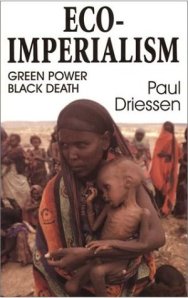
This, we are told, imposes the views of mostly wealthy, comfortable Americans and Europeans on mostly poor, desperate Africans, Asians and Latin Americans. It violates these people’s most basic human rights, denying them economic opportunities, the chance for better lives, the right to rid their countries of diseases that were vanquished long ago in Europe and the United States.
Worst of all, in league with the European Union, United Nations and other bureaucracies, the movement stifles vigorous, responsible debate over energy, pesticides and biotechnology. It prevents needy nations from using the very technologies that developed countries employed to become rich, comfortable and free of disease. And it sends millions of infants, children, men and women to early graves every year.
This ideological environmental movement, we are thus informed, is a powerful $4 billion-a-year US industry, an $8 billion-a-year international gorilla. And WWF is one of the major players. Like the profit-making international corporations it so freely criticises – into which it has crawled into bed, taking their money – the WWF itself is a massive international corporation,. Its declared income for 2008 was €447 million, including €107.7 million for its international arm.
This enables it to finance a massive publicity effort, giving it privileged access to the media, and to governments and international agencies – from which it draws much of its funding.
Ranged against this corporate giant is a disparate, ill-funded range of individuals and groups, with only a small fraction of its resources. Inevitably, the voice of WWF is heard loudest, drowning out complaints and concerns.
That much also applies to its field activities. Where, as is so often, it is operating in remote areas, there is rarely an independent voice or observer capable of recording what precisely happens. Much of what we know of WWF’s activities, therefore, comes from WWF itself, inevitably spun in its own favour.
A self-serving industry

Before joining WWF he spent 15 years at The Nature Conservancy. Earlier in his career, he led marketing and management teams at Gillette, Procter and Gamble and at Dun and Bradstreet, where he advised companies including RJR/Nabisco and Coca-Cola. The associations reinforce the impression of a small clique dominating the environmental charity “industry” and the closeness between that industry and the commercial corporates.
As to the Amazon venture, this perhaps is the clearest example of the self-serving ethos, best illustrated by comparison with what an effective conservation programme might seek to achieve.
In this, it is widely recognised that the greatest pressure on the forests is through clearance to make way for agriculture, including soya, sugar growing for ethanol production, and cattle ranching. In fact, according to Greenpeace, cattle ranching currently accounts for 80 percent of forest clearance (see map below).
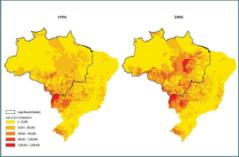
It follows, therefore, that for an “avoided deforestation” project to have most effect, it should be located in areas where the forest is most at risk – i.e., in the south or east, and especially in the Mato Grosso. To locate projects in the uninhabited north, or the sparsely inhabited, inaccessible west, cannot be considered a high priority.
Furthermore, as is pointed out in a report from the Albert-Ludwigs-University Freiburg, for maximum carbon sequestration, the most effective option is reforestation of deforested areas. This is also the best conservation and biodiversity option.
As to a finance system based wholly or largely on carbon credits, there were “considerable risks for perverse incentives regarding these objectives.” Firstly, the potentially huge number of credits that would become available if the entire global forest mass was included in the CDM would crash the carbon price. This would give CO2 producers a “get out of jail free” card, reducing their incentive to adopt carbon reduction technologies by allowing them to acquire cheap credits and maintain a “business as usual” profile.
Secondly, a simplistic, market-based system such as CDM would not discriminate between priority areas, which tend to be problematic, and the “low hanging fruit”. This is recognised by the Freiburg report – which was commissioned by Greenpeace – where reference is made to “leakage”, the displacement of emissions, rather than any absolute reduction.
Such nuanced arguments, with other reservations set out in further reports, seem to be absent from the WWF case. While Greenpeace opposes the universal adoption of the CDM mechanism, and proposes focusing on priority areas, WWF persists in making shrill demands for unrestricted carbon trading. Without this, it says, “keeping global average surface temperature increase below 2°C will likely be impossible.”
A human-centric approach
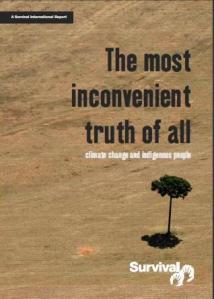
Securing the land rights of indigenous people, and rigorously enforcing them, they argue, is the best way of preventing damaging exploitation of the forests. And, as Survival International illustrates, environmental degradation and human rights abuses often go hand-in-hand.
Other issues, such as illegal logging, are primarily matters for law enforcement. While NGOs have proved of considerable value in pointing out lapses in enforcement – and worse – as well as reporting illegal activities to the authorities, establishment of extremely expensive protected areas is hardly necessary for such functions to be performed. The revenue-generating potential of monitoring activities, however, is very low.
In it for the money
Taken at face value, and certainly at the valuation placed upon its enterprise by WWF, setting up protected areas in the Amazon rainforests is wholly benign. From a robust, climate-sceptic stance, however, attempting to lock carbon dioxide out of the atmosphere is a waste of time and effort. On the other hand, even if the entire climate change agenda is accepted unreservedly, the enterprise still fails to pass muster – on numerous counts.
In the first instance, the ARPA project is extraordinarily expensive. The $80 million spent is more than ten times the entire income of a charity such as Survival International. Arguably, with considerably less funds, it achieves a great deal more than this exercise.
Secondly, even if the enterprise could be considered good value in isolation, it would be very hard to argue that the areas chosen – in the context of the damage being done elsewhere – represent the main or even an important priority. The resource expended, undoubtedly, could achieve more in other areas.
Thirdly, the reserves are a high maintenance exercise and are not economically viable. They require a constant flow of funds from external sources – thus generating the need for the carbon trading scheme. A less ambitious – or more pragmatic – scheme which achieved less than perfection but which was economically self-sustaining, would achieve more overall. Such a model, though, does not seem to have been considered.

Fifth, the actual amount of carbon saved would be minimal, and only a fraction of what could be saved if other options were taken up, such as reforestation.
Sixth, the trading in forest carbon would destabilise the CDM, crashing the carbon price and obviate the need for industrial CO2 producers to invest in “clean” technologies. Longer-term, it would reduce the amount of finance available for forest preservation and restitution, as funds were diverted to harvesting “low hanging fruit”.
Seventh, the programme is an interference in the internal affairs of host nations, distorting national priorities and absolving – or even preventing – those nations developing environmental protection schemes attuned to their own specific needs. It also risks damaging the rights of indigenous peoples, and creating dependency cultures.
In terms of climate change mitigation, conservation or any similar aspect, therefore, there is nothing to commend this WWF strategy. It is wholly malign. From the WWF stance, however, there are many advantages.
Firstly, the scheme would generate significant income for the pioneer, which happens to be WWF. It also generates funds for donor countries, either directly or indirectly by subsidising environmental programmes which would otherwise have to be tax-funded. This ensures cordial relations between the NGO and the governments on which they rely for access and permission to operate.
Secondly, it is a high-profile activity with a strong “feel-good” quotient which is likely to be attractive to private and corporate donors. It allows the claim that “we are saving the forests” – and the planet.
The effect of this, incidentally, can be seen in the report of KFW Entwicklungsbank, which cites project manager Jens Ochtrop. He says: “There is practically no more illegal felling of trees, planting of soybean fields or grazing of cattle in the ARPA areas. The protection by ARPA also affects land speculators and illegal tree fellers. They keep away”.
But then, in the inaccessible Tumucumaque Mountains National Park and other strict protection areas, there was no illegal felling of trees, planting of soybean fields or grazing of cattle. One could make a similar case for the success of a wild elephant eradication scheme in Croydon High Street or Brooklyn.

Fourth, carbon trading itself presents a very valuable income stream for investment and finance houses, which are well-represented on the boards of environmental charity allies and donor foundations. All of these can be relied upon to provide generous support for future activities, funded in part from carbon trading.
Fifth, forest credits available in significant numbers would reduce overall the costs of emitting CO2 for many industrial enterprises and eliminate the need for expensive CO2 reduction technology – and many of these industrial enterprises are generous funders of the environmental movement.
Chris Land, again puts some this in perspective, noting that the Indonesian government is fond of REDD, “not least because it hopes to gain millions of dollars worth of funding through REDD.”

That identifies a final element. The scheme allows national governments to be seen to be “doing something” on climate change, while avoiding excessive burdens on their industries, on which they rely for taxation and employment. Governments are increasingly important financiers of environmental NGOs, and will tend to favour those who support their agendas.
Putting this all together, one does not need a public admission from WWF to assert – with great confidence – that the motivation behind its current Amazon schemes is money. Similar motivation can be seen in other environmental groups, including the Woods Hole Research Centre.
Above all, to keep the money flowing, there must be continued alarums about “climate change” and its impact on rainforests. Without global warming, of course, there would still be pressure on the forests from logging, from agricultural encroachment and other land use. But it would be difficult to sustain such a large cash flow from dealing with these problems, or legitimise intervention in what would then be the internal affairs of host nations.
Climate change – à la WWF – therefore, affords both cash and an excuse to intervene. If it didn’t actually exist, it would surely have to be invented.
